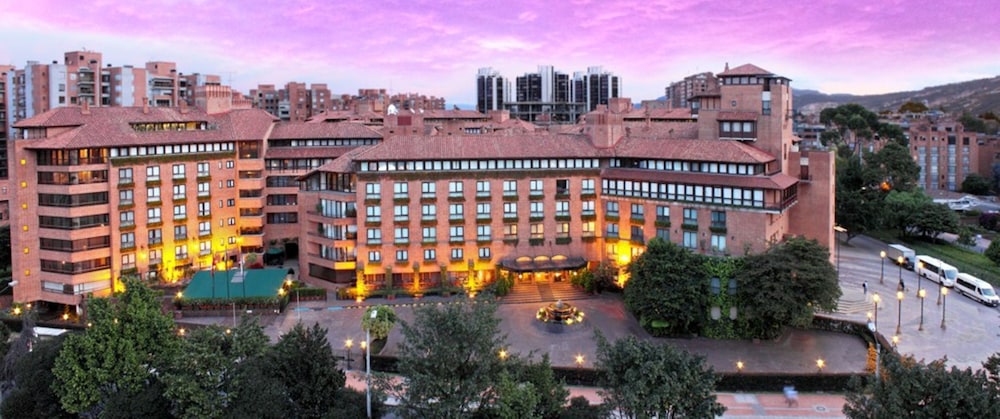The 2nd International Blastocystis Conference has been completed with great success. It was a very worthy sequel to the first conference in Ankara back in 2015, attracting about 100 delegates.
The Scientific Committee (image above) consisted of Prof Funda Dogruman-Al (main organiser of the 1st International Blastocystis Symposium), Senior Scientist Rune Stensvold, and Associate Prof Juan-David Ramírez González, who also headed the local organising committee (LOC; image below).
We are all very thankful to Juan-David and his colleagues, the entire LOC, the Universidad del Rosario in Bogotá and La Fontana Hotel, which provided an excellent framework with premium facilities.
The Faculty can be seen on the image below. From left to right, it's Rodolfo Casero, [Magdalena Maria Martinez Agüero, Director of Investigation and Innovation, Facultad de Ciencias Naturales Y Matemáticas, Universidad del Rosario], Andrew Roger, Rune Stensvold, Hisao Yoshikawa, Raul Tito Tadeo, Monica Santin-Duran, Funda Dogruman-Al, Kevin Tan, and Juan David Ramirez Gonzalez. Workshop sessions and keynote lectures were developed and given by members of the Faculty.
The workshop took place on 9–10 October and covered sessions on diagnosis (microscopy, culture, PCR, etc.), in vivo and in vitro experimental models, subtype calling from DNA sequence data, gut microbiota analysis (NGS data processing in R), genomics and evolution (introduction to Blastocystis genomics and resources available), and theoretical topics linked to epidemiology, clinical microbiology and infectious disease issues.
The conference took place on 11–12 October and consisted of nine keynote lectures delivered by the Faculty members, 12 oral presentations and 22 poster presentations.
The award for the best oral presentation was given to Justinn Hamilton who is an ecologist now based at University of Copenhagen for his talk 'Exploring interactions between Blastocystis sp., other intestinal parasites and the gut microbiomes of wild Chimpanzees (Senegal): Not-so-friendly old-friends-hypothesis'.
The award for the best poster presentation went to David Carmena's group for the impressive study 'Molecular epidemiology of Blastocystis sp. in asymptomatic school children from Madrid, Spain'.
The workshop programme can be viewed/downloaded here, and the conference programme is available here. The poster programme is available here.
Please go here to browse conference proceedings, and here for workshop guidelines.
Stay tuned for Wrap Up Part II and III, which will include more photos and some of the take-home messages from the conference.
Please also follow @Blastocystis on Twitter and and the International Blastocystis Network Facebook page for updates/pictures from the conference.
The Scientific Committee (image above) consisted of Prof Funda Dogruman-Al (main organiser of the 1st International Blastocystis Symposium), Senior Scientist Rune Stensvold, and Associate Prof Juan-David Ramírez González, who also headed the local organising committee (LOC; image below).
We are all very thankful to Juan-David and his colleagues, the entire LOC, the Universidad del Rosario in Bogotá and La Fontana Hotel, which provided an excellent framework with premium facilities.
The Faculty can be seen on the image below. From left to right, it's Rodolfo Casero, [Magdalena Maria Martinez Agüero, Director of Investigation and Innovation, Facultad de Ciencias Naturales Y Matemáticas, Universidad del Rosario], Andrew Roger, Rune Stensvold, Hisao Yoshikawa, Raul Tito Tadeo, Monica Santin-Duran, Funda Dogruman-Al, Kevin Tan, and Juan David Ramirez Gonzalez. Workshop sessions and keynote lectures were developed and given by members of the Faculty.
The workshop took place on 9–10 October and covered sessions on diagnosis (microscopy, culture, PCR, etc.), in vivo and in vitro experimental models, subtype calling from DNA sequence data, gut microbiota analysis (NGS data processing in R), genomics and evolution (introduction to Blastocystis genomics and resources available), and theoretical topics linked to epidemiology, clinical microbiology and infectious disease issues.
 |
| Some of the workshop participants and Faculty members |
The conference took place on 11–12 October and consisted of nine keynote lectures delivered by the Faculty members, 12 oral presentations and 22 poster presentations.
The award for the best oral presentation was given to Justinn Hamilton who is an ecologist now based at University of Copenhagen for his talk 'Exploring interactions between Blastocystis sp., other intestinal parasites and the gut microbiomes of wild Chimpanzees (Senegal): Not-so-friendly old-friends-hypothesis'.
The award for the best poster presentation went to David Carmena's group for the impressive study 'Molecular epidemiology of Blastocystis sp. in asymptomatic school children from Madrid, Spain'.
The workshop programme can be viewed/downloaded here, and the conference programme is available here. The poster programme is available here.
Please go here to browse conference proceedings, and here for workshop guidelines.
Stay tuned for Wrap Up Part II and III, which will include more photos and some of the take-home messages from the conference.
Please also follow @Blastocystis on Twitter and and the International Blastocystis Network Facebook page for updates/pictures from the conference.











